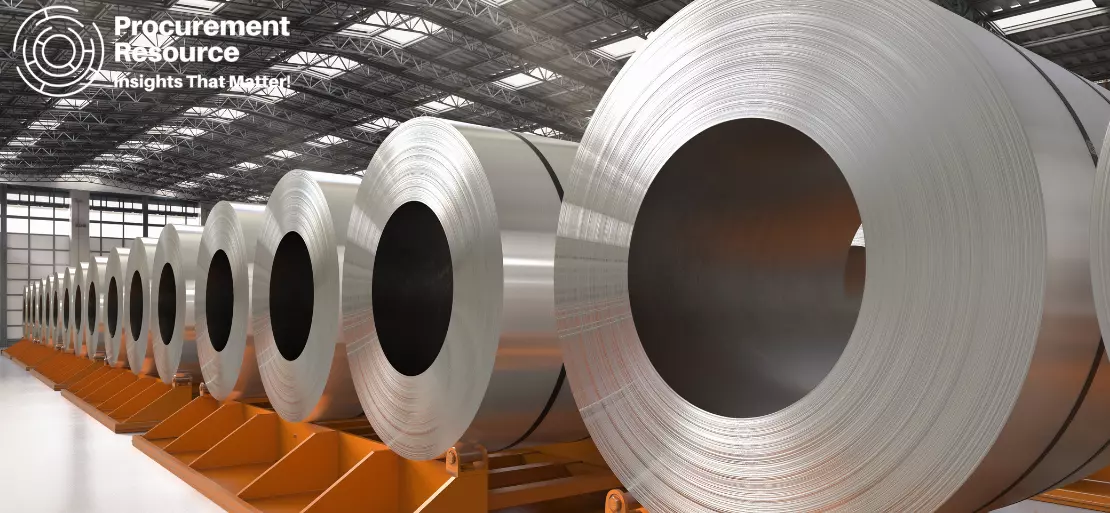What is Cold Rolled Sheet and the Properties that Make it a Useful Product for the Several Applications?

Low-carbon steel that is manufactured by a “cold rolling” methodology and managed at an almost normal room temperature is described as cold-rolled steel. The name “cold rolled” essentially indicates to the name of the commodity as flat-rolled sheet and coil goods.
Cold-rolled steel provides exceptional intensity and machinability. Besides, the sheet form of cold-rolled steel is normally utilised for concocted or engineered commodities in which stiff forbearance, circularity, upstandingness, and glazed exteriors are essential.
Request Access For Regular Price Update of Cold-rolled Steel Sheets
Cold reduction mills are used to generate cold-rolled steel where the substance is cooled at almost room temperature. This is then galvanized and/or hardened rolled and the procedure generates steel that is utilised for a broad range of exterior textures that has an excellent tolerance, concentric circle shaped, and straightness as compared to hot-rolled steel.
Such a type of steel sheets consists of lesser amount of carbon matter as well as the tempering procedure makes these smoother as compared to the hot-rolled sheets. The products made from cold-rolled steel are normally manufactured using sheets, strips, bars, and rods. These commodities are smaller as compared to the similar products created by using hot-rolled methodology.
Additionally, cold-rolled steel demonstrates properties that makes it resilient to corrosion and has softer exterior finishes that makes it even more resistant to wearing down.
The cold-rolled steel sheets and strips are accessible in the form of full-hard, half-hard, quarter-hard, and skin-rolled. Amongst these kinds, full-hard rolling lessens the thickness by nearly 50 percent, although the other sheets and strips are comparatively thicker. On the other hand, skin-rolled steel supply is generally utilised in consequent cold-working methodologies wherever excellent ductileness is necessary.
Additional forms and structures may be cold rolled in case the cross-section is comparatively consistent and the oblique aspect is fairly small. The structural forms of cold-rolled steel are run through several molding and forming processes which are conducted along the ways of sizing, rundown, roughing, partial-roughing, partial-finishing, and final finishing.
Read More About Cold Rolled Sheet Production Cost Reports - REQUEST FREE SAMPLE COPY IN PDF
Cold-rolled steel is employed in a wide range of commodities that ranges from domestically used appliances such as washing machines and refrigerators to manufacturing and engineering machinery, architectural modules, automobiles, and an assortment of construction-linked manufactured goods. Hence, such a form of steel is a vital component in the present-day society.
There are multiple properties that make cold-rolled steel sheets indispensable today. Some of these are discussed below:
Heightened Intensity:
Cold-rolled steel is substantially high of strength as compared to hot-rolled steel. This is primarily because the rollers condense the steel at the room temperature and perform strain hardening which makes the steel intense.
Enhanced Exterior Texture:
Other than being stronger, cold-rolled steel has advanced outer finish and is smoother with lesser exterior imperfections relative to hot-rolled steel. Such a feature not just enhance the esthetical beauty and style of cold-rolled steel; it also helps cold-rolled steel to be a more appropriate element for specific usage like constructing bridges.
Tougher Forbearances:
As compared to hot-rolled steel, cold-rolled steel provides stronger and firmer tolerances. This is because cold-rolled steel is normally thinner in comparison to hot-rolled steel which helps in offering toughness comparatively to other steel production methodologies.
Various Alternatives:
Cold-rolled steel can be produced using numerous options available including full-hard, half-hard, quarter-hard, and skin-rolled. Out of these alternatives full-hard rolling method is frequently chosen as it provides the toughest tolerances.
About Author:
|
Prakhar Panchbhaiya Senior Content Writer at Procurement Resource Prakhar Panchbhaiya is an accomplished content writer and market research analyst. With over 4 years of experience in content creation and market analysis encompassing many industries, including pharmaceuticals, nutraceuticals, biochemistry, healthcare, ed-tech, and Food & Agriculture, he has been creating quality content for multiple sectors. He is a Biochemistry major with sturdy backing in a PG diploma in digital marketing, helping in the exhaustive content creation based on extensive research and competitive marketing. |

COMMENTS (0)